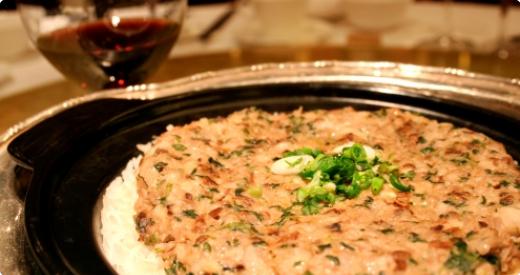
2011 kick started with record low January temperatures in Hong Kong. We kept ourselves warm with various nourishing options ranging from sizzling hot plate dishes, hot pots to casserole rice. This local seasonal favourite often makes its way among the top 10 popular items in dining rooms and streetside stalls around town starting from end of October. When cold winds start blowing late November, many of the city’s kitchens are scented with the smokey aromas of charred rice crust. As we face our coldest months, enjoy a huge variation of clay pot delights!
Casserole rice is a fairly simple dish that is easy to prepare. The traditional recipe assembles common ingredients such as chicken, preserved sausages and minced meat. These are placed along with half-cooked rice in a clay pot over a charcoal stove. Lovers of this dish are most enamoured with the thin crispy layer of rice crust (“fan jiao” in Cantonese) formed at the bottom of the clay pot. All the ingredients have infused into this burnt rice layer giving it a wonderful crunchy texture filled with flavour.
In recent years casserole rice has gone upmarket and found its way into Hong Kong and mainland China’s hotel menus. To get the latest updates, we spent time with Executive Chef Leung Fai Hung, from Michelin 1-star restaurant Hoi King Heen at Intercontinental Grand Stanford Hotel and Executive Chef Mango Tsang, of Dynasty Chinese Restaurant at Marriott Renaissance HK Harbourview Hotel .
Chef Leung of Hoi King Heen brought his own flair to the dish by adding braised mandarin fish fillets with preserved vegetables and milk casserole rice. Chef Leung abandoned traditional use of preserved meats to enhance flavour and instead, chose to focus on seafood flavours, subtle umami flavours and add risotto-like milky texture to the dish. To accompany this seafood rendition, sommelier James Wong suggested a 2009 Palmadina Sauvignon Blanc to give zest and balance to the seafood flavours.
Chef Tsang of Dynasty favours a more traditional recipe but added high quality ingredients such as abalone, premium dried Chinese mushrooms and 40-year-old dried tangerine peel. A 40-year-old tangerine peel can cost $27,206 HKD/ $23,000 RMB per teal which equals approximately 37 grams. Chef Tsang adds a generous amount of lard in the casserole to add flavour and richness. He says, “It’s a tradition to add lard, and back then, healthy eating was not a trend.”
For readers who love to experiment, we gleaned a few cooking tips from Chef Leung on how to make your own casserole rice at home: “It’s always good to start with a small and thin-bottom clay pot if you aim for a nice layer of crispy rice crust. Cook the rice over high heat. Once the water is boiling, turn the heat down. Add the rest of the ingredients when all the water has evaporated.”









